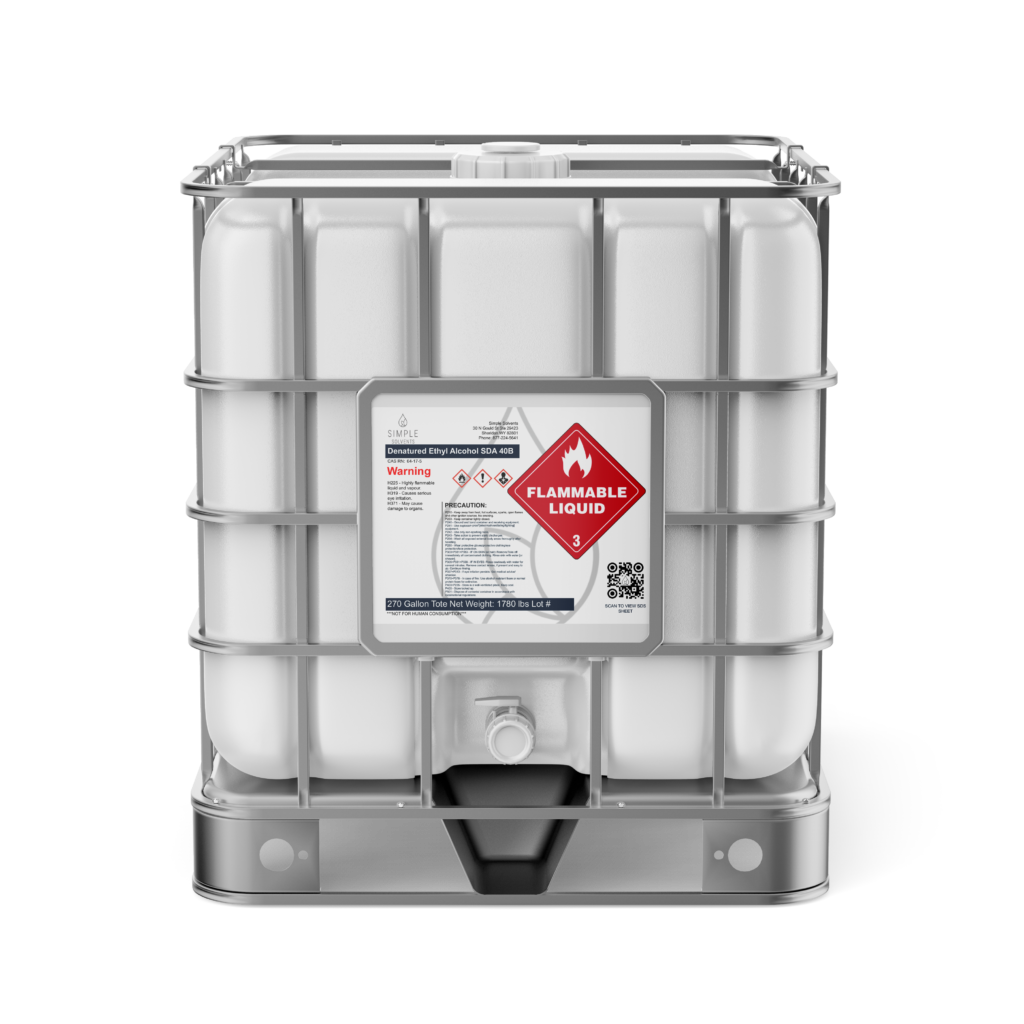Shipping Solvents: Regulations, Best Practices, and Safety

Shipping Solvents: Regulations, Best Practices, and Ensuring Safe Transportation
Shipping solvents from one location to another can be a complex, yet necessary aspect of working with these versatile and valuable substances. Given their wide range of applications and roles in industries like manufacturing, pharmaceuticals, and even home extraction, securely and legally shipping solvents becomes a crucial aspect of conducting business or pursuing a hobby in these fields.
At Simple Solvents, we are dedicated to equipping our customers with not only the purest pharmaceutical-grade solvents but also the knowledge and resources necessary to handle, store, and ship solvents responsibly. In this comprehensive guide, we will provide an overview of shipping regulations, best practices, and the critical elements to consider when transporting solvents for any purpose.
Adhering to established shipping regulations for solvents is essential to prevent accidents, ensure compliance with legal requirements, and protect public safety. A foundation of knowledge in these regulations, as well as understanding the most effective practices for shipping and handling solvents, can significantly reduce risks and potential liabilities. Furthermore, selecting appropriate carriers and services for solvent transportation is vital for efficient, cost-effective, and secure delivery.
In this in-depth guide, we will take you through pertinent shipping regulations, discuss best practices for packaging and securing solvents in transit, explore various carrier options, and outline strategies for managing the many challenges associated with shipping solvents. Our aim is to empower you with the knowledge and expertise required to safely and efficiently transport solvents, ensuring they reach their intended destinations without incident. Let us embark on this journey toward safer, more responsible solvent shipping practices together.

Shipping Regulations and Compliance
Understanding and adhering to shipping regulations for shipping hazardous materials is essential when sending solvents through any transportation channel. In the United States, several key regulatory agencies govern the transportation of hazardous materials, including solvents.
- Department of Transportation (DOT): The DOT has established numerous regulations governing the transportation of hazardous materials, including solvents, through its Pipeline and Hazardous Materials Safety Administration (PHMSA). These regulations cover proper packaging, labeling, and documentation requirements for safe transportation.
- International Air Transport Association (IATA): If shipping solvents via air, IATA regulations must be followed. IATA requirements address proper packaging and labeling of hazardous materials and specific documentation for air transportation. Shippers should consult IATA’s Dangerous Goods Regulations for further guidance.
- International Maritime Dangerous Goods (IMDG) Code: For shipping solvents overseas, compliance with the IMDG Code is necessary. This code provides guidelines for the safe maritime transportation of hazardous materials, addressing packaging, labeling, stowing, and handling requirements.
Be sure to research and stay up-to-date on the latest shipping regulations, as they may change or evolve over time.
Packaging and Securing Solvents for Shipping
Proper packaging and preparation are crucial in ensuring that solvents arrive at their destinations safely and in good condition. Here are some best practices for packaging and securing solvents for transportation:
- Choose the Right Container: Use containers specifically designed for shipping solvents, such as UN-approved containers, which are built to withstand the stresses of transportation. Ensure that the containers are compatible with the solvents being shipped to prevent reactions or leaks.
- Provide Adequate Cushioning: Protect containers with cushioning materials like bubble wrap, foam, or vermiculite to absorb shocks, vibrations, or impacts during transportation. This can help prevent leaks or spills resulting from damaged containers.
- Label Accurately: Clearly label the containers with the proper hazardous material classification, including any necessary symbols or markings as required by transportation regulations. This ensures the appropriate handling and processing of solvents throughout their journey.
- Seal Securely: Seal containers with strong, leak-resistant closures to minimize the risk of leaks or spills while in transit. Tape should be applied in an “H” pattern for maximum security.

Selecting the Right Carrier for Shipping Solvents
Choosing the appropriate carrier for shipping solvents is essential for efficient delivery, cost management, and safety. Factors to consider when selecting a carrier include shipping method (ground, air, or sea), destination, and the specific solvents being transported.
- Ground Shipping: Carriers like UPS, FedEx, and the United States Postal Service (USPS) offer hazardous material shipping services. Not all solvents qualify for transport by these carriers, so check for each carrier’s specific size, weight, and material limitations.
- Air and Sea Shipping: For international shipments or larger quantities, specialized freight forwarders or cargo carriers may be necessary. These carriers can often handle a wider range of solvents and quantities, though may also have more complex documentation and packaging requirements.
- Carrier Reputation and Experience: Choose a carrier experienced in handling hazardous materials, with a solid track record for safety and reliability. Review customer testimonials, ratings, and certification to ensure your solvents will be in competent hands during transportation.
Managing Challenges and Contingencies in Solvent Shipping
Shipping solvents invariably presents challenges and unforeseen scenarios, but there are strategies to manage these situations effectively.
- Plan for Delays: Unanticipated delays may occur due to weather, customs, or other logistical issues. Stay informed of carrier updates, maintain clear communication channels, and plan for potential delays in advance.
- Insurance: Protect your solvents and finances by properly insuring your shipments. Research the different coverage options, including declared value, carrier liability, and third-party insurance, to select the coverage level best suited to your needs.
- Contingency Planning: Develop a contingency plan that outlines clear steps for addressing situations such as damaged shipments, carrier disruptions, or regulatory changes. Establishing a plan in advance can save time and reduce stress in tackling unexpected dilemmas.
Conclusion
Shipping solvents can be a complex process, yet armed with the right knowledge and strategies, achieving safe and efficient transportation is attainable. By understanding shipping regulations, employing best practices in packaging and securing solvents, selecting appropriate carriers, and proactively managing challenges, you can ensure a successful solvent shipment no matter the destination.
Looking for pharmaceutical-grade solvents and resources to optimize your operations? Choose Simple Solvents! We are committed to providing the highest-quality heptane solvent and ensuring that our customers have the necessary resources to optimize their operations in a responsible and effective manner. By choosing Simple Solvents, you become a vital participant in promoting safer, more responsible practices within your industry. Contact us today to learn more about our heptane solvent and how we can help you optimize your operations.
